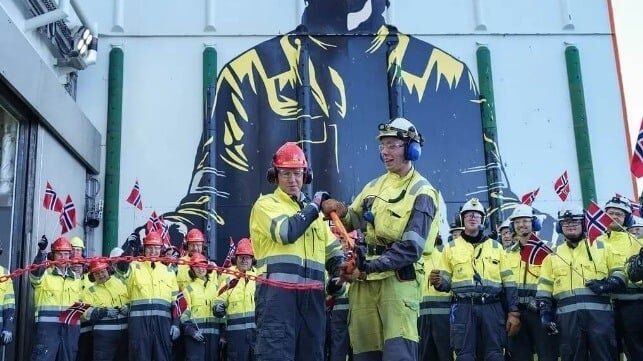Equinor Inaugurates Johan Castberg FPSO in Norway
Equinor, alongside its government partners, has officially launched the Johan Castberg FPSO, marking the commencement of operations at the northernmost oil field in Norway. Situated in the Barents Sea, this groundbreaking project commenced production in March and is expected to sustain energy output for the next three decades, as stated by Equinor.
The Johan Castberg field is currently operating at its peak capacity of 220,000 barrels per day, tapping into the Drivis, Hvis, and Skrugard formations. Upon its initiation, the field’s production alone more than doubled the oil output from the Barents Sea.
With approximately two tankers being loaded per week, the FPSO is generating significant revenue for its owners – Equinor, Var Energi, and Petoro AS, along with the Norwegian state, which holds a majority stake in Equinor. The estimated recoverable oil volume ranges from 450-650 million barrels, with further potential for expansion through nearby discoveries.
“We have identified opportunities to increase the recoverable barrels by 250-550 million, which can be developed and produced alongside Johan Castberg,” mentioned Equinor EVP Kjetil Hove earlier this year.
The subsea infrastructure supporting the FPSO is extensive, incorporating 30 wells and two satellite platforms. The development process spanned 14 years from initial discovery to first production and incurred a cost of around $8 billion. Equinor anticipates that, given current oil prices, the project will achieve breakeven within two years.
Norwegian Energy Minister Terje Aasland spearheaded the official inauguration ceremony for Johan Castberg on August 8, joined by key executives from Aker, Equinor, Var Energy, local government officials, and ministry leaders.
“With Castberg now operational, the Barents Sea boasts our second-largest producing oil field, our second-largest gas field, and the largest discovery earmarked for development,” remarked Aasland. “This not only secures jobs within the local business community but also lays the foundation for new opportunities over an extended period.”

